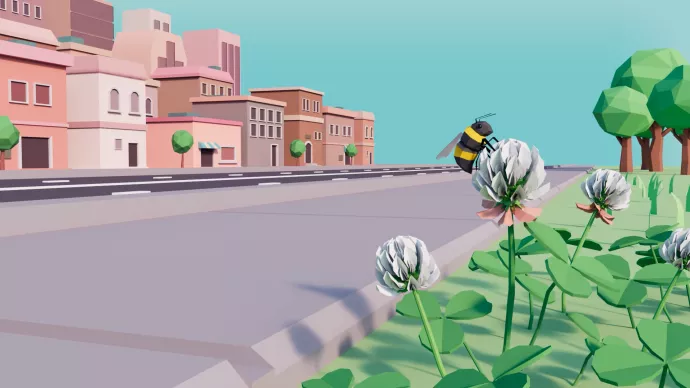Biomedical communications grad creates animated film explaining urban evolution

Human cities and urban settlements across the world are influencing how plants and animals evolve. As part of her master’s research project, U of T Mississauga’s Sherry An produced an animated educational video explaining how.
An is a science and medical illustrator who has just completed her master’s degree. The short, animated video, completed in September, was her final project as part of the Biomedical Communications program at UTM — a two-year graduate program that focuses on visual communication in health and biomedical sciences.
“I chose the project because I was very interested in the kind of science communication relating to areas like ecology, genetics and plant sciences,” An says.
The video, entitled “How life adapts to cities around the world,” is a 3D animation sharing the goals and results of a study undertaken by the Global Urban Evolution Project — a UTM-led study with 278 researchers from across the world. An undertook the research project after consulting with GLUE Project lead and UTM biology professor Marc Johnson.
Her goal was to share the GLUE Project’s findings with a wider audience. She says she was inspired by the project’s collaborative nature.
“It has a nice story with so many researchers collaborating together across so many different countries,” she says. “The kind of project to get out to the public.”
The study showed that urban development alters the local environment, potentially driving rapid evolution in the plants and animals affected.
Researchers collected data on white clover populations from 160 cities and found that the clovers that were farther from urban centres produced more hydrogen cyanide – a chemical defense to prevent the plant from being eaten by herbivores.
Genomic data from the study suggests this trend is adaptive. As there are fewer herbivores in urban centres due to land development, the clovers lose the need to maintain this defense mechanism the deeper in the urban centre they reside. The study provided evidence of widespread adaptation of organisms to urbanization. The findings were published in Science Magazine in March 2022.
An completed her undergraduate degree in genetics at the University of Guelph before starting her graduate program at UTM. Consequently, illustrating an animation with new research on her favourite subjects was a “great fit,” she says.
Her project consisted of three phases: research, pre-production and production. An spent four months on research before starting pre-production. She wrote a script, drafted a storyboard, created rough animations and planned the visual treatment for the video. It’s here where she consulted her supervisor, associate professor Michael Corrin.
“One of the things we were looking at was the challenges faced with communicating this kind of media,” An says. “Looking at things like what kind of misconceptions people have about evolution, what kind of media is already available out there when it first comes to urban evolutionary biology. Since it's a fairly new field, there wasn't too much.”
Graduate students in the program usually don’t have a lot of experience telling visual stories, Corrin says, but they learn to develop the skills quickly.
“We provide support, but they really very quicky learn to act as kind of visual journalists,” he says.
For her animation, An employed low poly 3D graphics, resembling the art style in many indie video games showing simplified polygons. She used Autodesk Maya to create 3D models and scenes before transferring them to Adobe After Effects to add scene transitions, 2D elements, icons, overlay and narration.
The animation was released in September of this year. An says she’s enjoyed the experience.
“I wanted to combine my passion for the arts and science,” she says.
The six-semester long Biomedical Communications program bridges art, science, medicine and communication to bring visual media to life. Corrin says the program’s origins lie in the early use of medical illustrations.
“In the early 20th century there was a resurgence and growth of medical illustrations in the professional domain,” he says. “It was recognized early on that medicine would really benefit from a lot of visualization and visual communication.”
That started at Johns Hopkins University in Baltimore, Maryland. Today there are four accredited programs in the United States – Johns Hopkins, University of Illinois, Chicago, Georgia Regents University, and Rochester Institute of Technology.
In Canada, there’s just the one program at UTM, Corrin says. It was founded in 1945 as a diploma program at U of T before evolving into a bachelor of science degree in the ’60s. In the 1990s, the undergraduate program became a master’s program of study.
“We’ve really become fundamentally visual storytellers,” Corrin says. “What’s most impressive to me is the diligence and commitment of the students to do it all and remain professional.”



